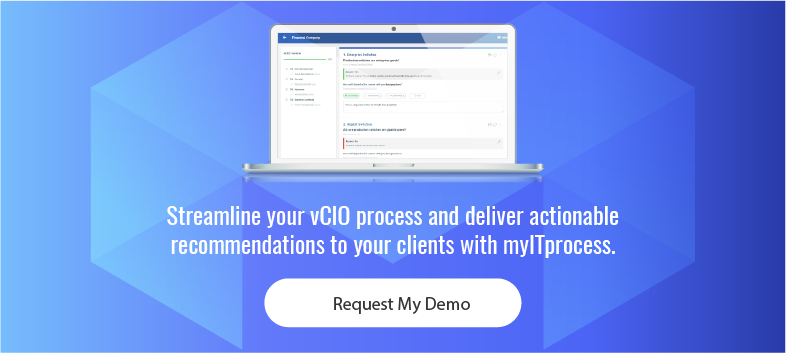For MSPs, reactive noise is a major variable that impacts profitability. Since the amount of time spent on reactive tickets directly impacts profitability, all of the other operational functions within an MSP should work toward driving down the time spent on reactive tasks.
Here are a few ways that MSPs can focus on proactive tasks to drive down time spent on clients reactively:
Implement Technology Alignment
Technology Alignment is a key role in the Technology Success process. The Technology Success process focuses on the importance of value-based relationships and delivering business results for customers. As the MSP market continues to mature, companies are searching for ways to stay ahead of the competition, and becoming a Technology Success Practice sets them apart.
To reduce reactive noise levels (or reactive tasks) and build more valuable vCIO processes, MSPs must build an IT strategy that aligns client technologies with their IT standards and shows them the business impact of misalignments. A Technology Success Practice has clearly defined roles and disciplined processes around technology standards and alignment. Pre-scheduled, consistent alignment visits that focus on reviewing the right categories at the right time will create a proactive relationship with clients.
At TruMethods, we recommend designating a Technology Alignment Manager (TAM) to not only own the client environment and stay ahead of the technology, but create lasting relationships with end users since they spend time on-site. The TAM is also responsible for leading the evolution of your company’s Standards Library, which includes a compilation of different requirements, such as legal and compliance requirements, security requirements, or business-specific requirements. Standards and best practices change as technology changes, so there needs to be a process around considering what new standards will drive down reactive noise.
Focus on Standards & Best Practices
There should be an internal focus in your MSP on maintaining a valuable Standards Library. This is not limited to the wording of the standards and best practices that uniquely exist within your MSP. Having a central location where the team can determine frequency, priority, and how the standards should be organized is essential. Considering what tickets are being submitted to the Support Desk and identifying trends that can be built into proactive standards can make a huge impact.
If you are implementing these tactics, all of your clients will be aligned against the same standards and your Standards Library will define Your Company Way (or the end-result that your services deliver to clients). With that being said, companies that do not have a focus on evolving a Standards Library will fall behind and become more reactive as technology changes and their clients become more complex.
Use Findings to Fuel Strategic Initiatives
There is value in doing Technology Alignment proactively, and there is added value in using the information found during the alignment process for strategic planning. Reviews should be done to assess a client’s environment and determine how well they are aligned with your company’s standards and best practices. Virtual Chief Information Officers (vCIOs) should take the information from the review, analyze the risk associated with misalignments, and use those findings to support strategic initiatives.
Projects will result from knowing what is in and out of alignment. Considering the clients’ business needs, they will be prioritized strategically with the end-result in mind and further suppress reactive noise once completed. Using a strategic planning process to drive down reactive noise over time will result in a more valuable relationship, which is mutually beneficial. Clients see improvement in efficiency as they work toward business goals, while your MSP experiences more profitability and focuses on proactive, valuable, and profitable activities!


